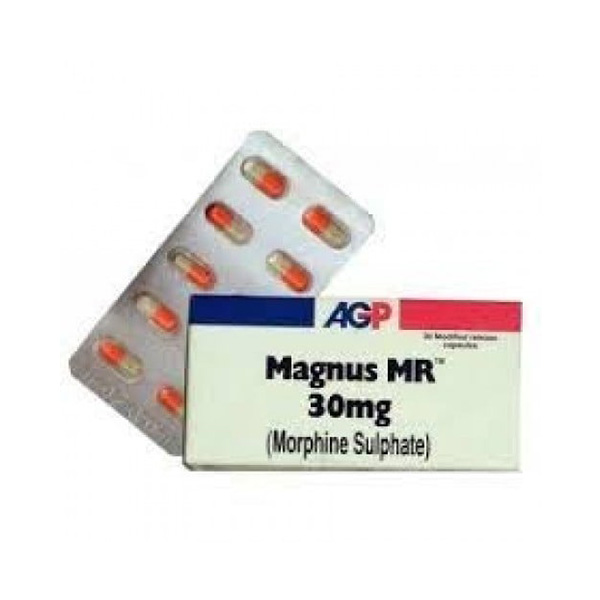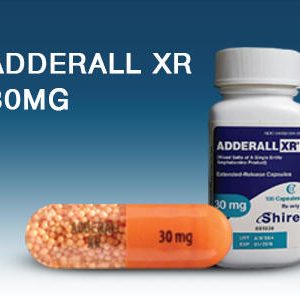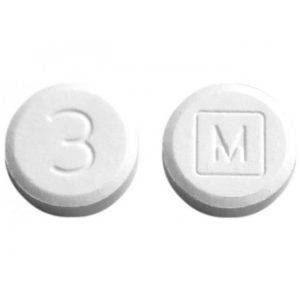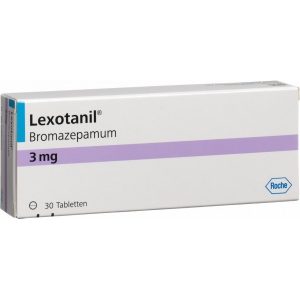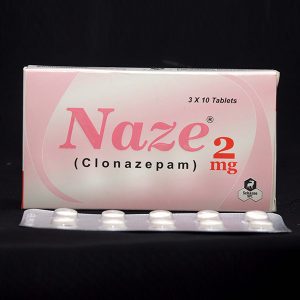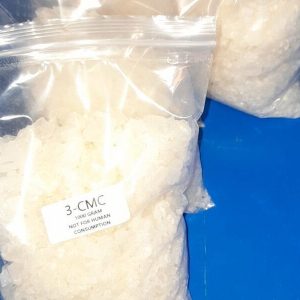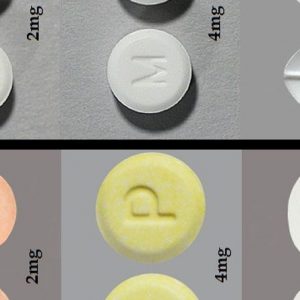Magnus MR Morphine 30mg purchase online
Magnus MR (Morphine Sulfate) 30 mg Capsule Buy Magnus MR (Morphine Sulfate) 30 mg Capsule Safely Online
Magnus MR (Morphine Sulfate) 30mg Capsule – Order Without a Prescription – Overnight Delivery
Magnus MR (Morphine Sulphate) 30mg For Sale in the United States of America – Reliable Pain Pharmacy
Magnus MR for sale (Morphine Sulphate) 30mg Online at the Lowest Prices in EUROPE & AMERICA
Where and how to safely purchase Magnus MR (Morphine Sulphate) 30mg online today
1. Rhotard Morphine SR 30mg Tablets Morphgesic SR 30mg Tablets for sale
2. Composition in qualitative and quantitative terms
Morphgesic SR 30mg Tablets/Rhotard Morphine SR 30mg Tablets
30 mg morphine sulphate is contained in each pill.
Excipients with a well-defined effect:
Glucose (63.000 mg per tablet).
3. Pharmacological formulation
Tablets with a controlled release
Each 30 mg tablet is a biconvex round film coated tablet in a violet color.
4. Clinical specifics
4.1 Indications for use
Rhotard Morphine SR / Morphgesic SR tablets are intended in adults for the treatment of severe pain for an extended period of time.
4.2 Administration posology and technique
Posology Children’s population
The usage of Rhotard Morphine SR / Morphgesic SR pills in children is not recommended.
Adults: Dosage is determined by the intensity of the pain and the patient’s prior history of analgesic use. Typically, the tablets should be taken twice daily at 12-hour intervals. For patients with severe pain, a starting dose of one or two 10 mg tablets (10 mg) twice daily is indicated. It is recommended that as the severity of pain increases, the dosage of morphine be increased to get the desired alleviation. The dosage can be adjusted by combining tablets of different strengths (10, 30, 60, and 100 mg) or by utilizing tablets of a greater strength alone.
It is suggested that patients who have been switched from another oral morphine preparation with comparable bioavailability to oral morphine liquid get the same total morphine dose in a 24-hour period. This entire dose should be divided in half and administered in the morning and evening. Titration of the dose and clinical examination may be necessary.
If a patient received parenteral morphine prior to being switched to Rhotard Morphine SR/Morphgesic SR tablets, a larger dose of morphine may be necessary. Individual dosage adjustments will be required to compensate for any loss of analgesic efficacy due to oral delivery.
It is not recommended to administer Rhotard Morphine SR/Morphgesic SR pills within the first 24 hours after surgery to relieve postoperative pain. Following this initial period, the dosage should be determined by the physician.
Supplemental parenteral morphine may be required in some patients, which is entirely appropriate. However, caution should be exercised regarding the total morphine dosage, as well as the delayed effects of morphine in the Rhotard Morphine SR/ Morphgesic SR formulation.
Rhotard Morphine SR/Morphgesic SR tablets should be used cautiously postoperatively (as with all morphine preparations), but especially after abdominal surgery.
Motility in the stomach should have resumed and should be maintained.
Administration technique
Rhotard Morphine SR / Morphgesic SR oral tablets should not be chewed.
5.1 Properties pharmacodynamica
Group of pharmacotherapeutic agents: Opioids
N02A is the ATC code.
Efficacy mechanism
MAGNUS MR SULFATE ER 30 MG works as an agonist at central nervous system opiate receptors, primarily Mu and, to a lesser extent, Kappa receptors. Supraspinal analgesia, respiratory depression, and euphoria are assumed to be mediated by Mu receptors, while spinal analgesia, miosis, and sedation are thought to be mediated by Kappa receptors.
Central Nervous System: Morphine’s primary therapeutic effects are analgesia and drowsiness (i.e., sleepiness and anxiolysis). MAGNUS MR SULFATE ER 30 MG exerts a sedative effect on the respiratory centers of the brain stem. Morphine acts directly on the cough center in the medulla, suppressing the cough reflex. Antitussive effects are possible at doses lower than those required for analgesia. Morphine induces miosis in complete darkness. While pinpoint pupils are indicative of opioid overdose, they are not diagnostic (e.g., pontine lesions of haemorrhagic or ischaemic origin may produce similar findings). Hypoxia may manifest as marked mydriasis rather than miosis in the setting of morphine overdose.
MAGNUS MR SULFATE ER 30 MG and similar analgesics have the potential to cause physical and psychological dependence and should be used with caution. Additionally, tolerance may develop.
Smooth Muscles of the Gastrointestinal Tract and Other Smooth Muscles
MAGNUS MR SULFATE ER 30 MG inhibits motility by increasing smooth muscle tone in the stomach and duodenal antrum. Food digestion is slowed down in the small intestine, and propulsive contractions are reduced. Constipation is caused by a decrease in propulsion peristaltic waves in the colon and an increase in tone to the point of spasm. Morphine, in general, raises smooth muscle tone, particularly in the gastrointestinal and biliary system sphincters. Morphine may cause spasms in the Oddi sphincter, hence increasing intrabiliary pressure.
MAGNUS MR SULFATE ER 30 MG may cause histamine release with or without accompanying peripheral vasodilation. Pruritus, flushing, red eyes, sweating, and/or orthostatic hypotension are all signs of histamine release and/or peripheral vasodilation.
Endocrinology
Opioids have been shown to have an effect on the hypothalamic-pituitary-adrenal or -gonadal axes. Several alterations can be observed, including an increase in serum prolactin and decreases in plasma cortisol and testosterone in the presence of abnormally low or normal ACTH, LH, or FSH levels. Certain premenopausal women may have insufficient oestrogen. These hormonal alterations may produce clinical signs.
Additional Pharmacological Consequences
In vitro and animal research reveal that natural opioids, such as morphine, have a variety of effects on immune system components; however, the clinical relevance of these findings is uncertain.
Oral, subcutaneous, intramuscular, intravenous, intraspinal, and rectal modes of administration are available. Parenteral dosages may be administered as intermittent injections or as continuous or intermittent infusions, depending on the patient’s analgesic requirements.
USES
This medicine is used to assist in the relief of severe, persistent pain (such as due to cancer). Morphine is classified as an opioid (narcotic) analgesic. It works by altering how your body perceives and responds to pain in the brain.
The higher doses of this medication (100 mg or more per tablet) should be used only if you have been taking moderate to high doses of opioid pain drugs on a regular basis. These strengths may result in overdose (and maybe death) if taken by someone who has not been using opioids on a consistent basis.
Avoid using extended-release morphine to treat pain that is moderate or will resolve within a few days. This drug is not intended for usage on a “as required” basis.
MAGNUS MR SULFATE ER 30 MG TABLET DIRECTIONS FOR USE
Before you begin using morphine, and each time you receive a refill, read the Medication Guide issued by your pharmacist. Consult your physician or pharmacist if you have any queries.
Take this drug on a regular basis, not as needed for severe (breakthrough) pain, as advised by your doctor. Take this medication with or without meals, usually every 8 to 12 hours, as advised by your doctor. Certain brands should be taken only once every 12 hours. If you experience nausea, it may be beneficial to take this medication with meals. Consult your physician or pharmacist for other strategies to alleviate nausea (such as lying down for 1 to 2 hours with as little head movement as possible). Consult your doctor if nausea persists.
Consume the tablets in their whole. The tablet should not be broken, crushed, chewed, or dissolved. This can result in the whole release of the drug, raising the danger of morphine overdose.
Dosage is determined by your medical history and reaction to treatment. Do not raise your dose or take this medication more frequently or for a longer period of time than suggested, since your risk of experiencing side effects may rise. When instructed, discontinue the medicine properly.
If you abruptly discontinue use of this drug, you may experience withdrawal symptoms (such as restlessness, watering eyes, runny nose, nausea, sweating, muscle aches). To help avoid withdrawal, your doctor may gradually decrease your dose. Withdrawal symptoms are more likely to occur if you have taken morphine for an extended period of time or in heavy dosages. Inform your doctor or pharmacist immediately if you have withdrawal symptoms.
When this medication is used for an extended period of time, it may lose its effectiveness. Consult your physician if this drug ceases to work properly.
While this medication benefits a large number of people, it can occasionally result in addiction. This risk may be increased if you have a substance use disorder (such as excessive drug/alcohol use or addiction). To minimize the danger of addiction, use this drug exactly as directed. Consult your physician or pharmacist for additional information.

